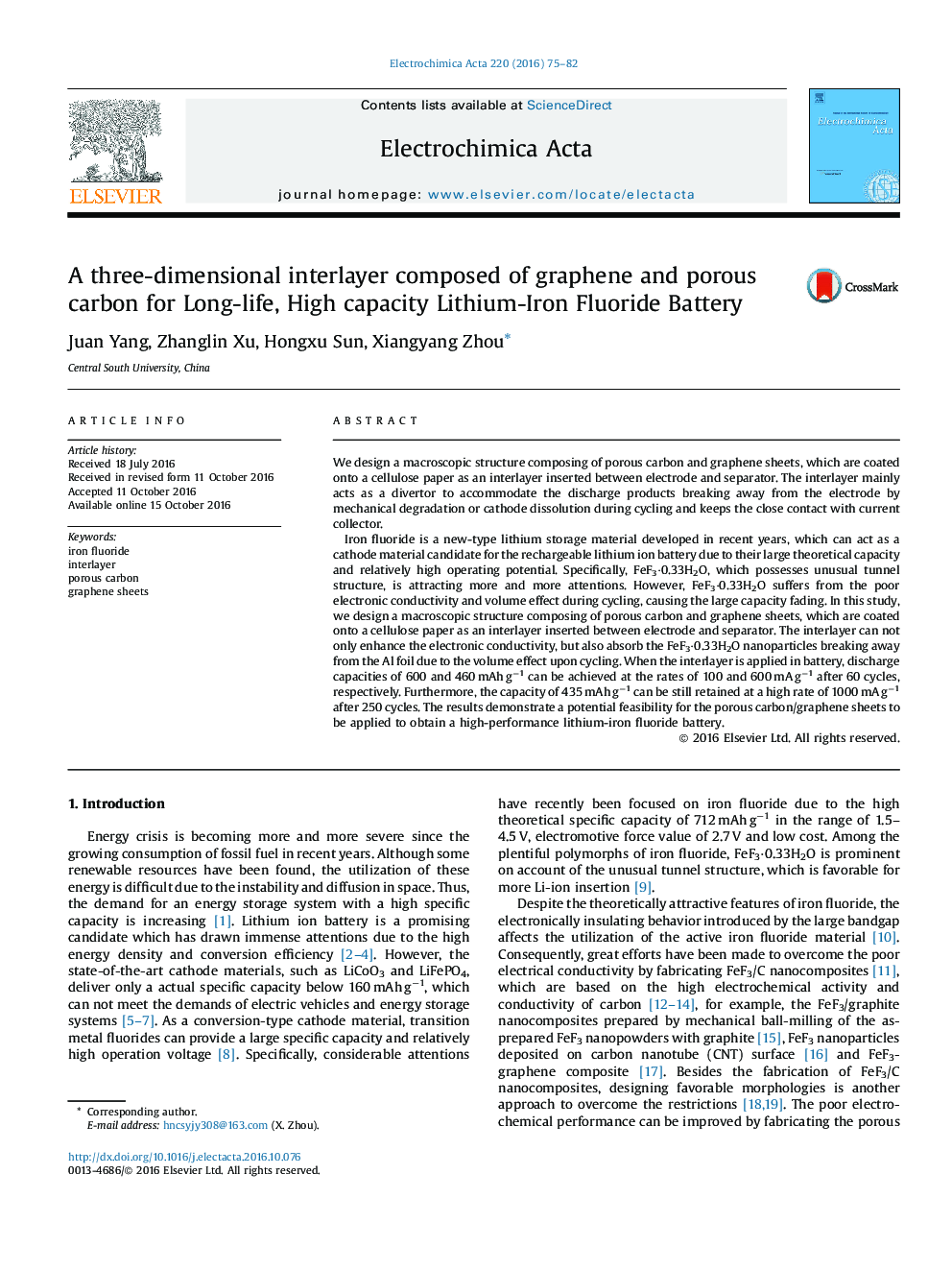| Article ID | Journal | Published Year | Pages | File Type |
|---|---|---|---|---|
| 6472278 | Electrochimica Acta | 2016 | 8 Pages |
We design a macroscopic structure composing of porous carbon and graphene sheets, which are coated onto a cellulose paper as an interlayer inserted between electrode and separator. The interlayer mainly acts as a divertor to accommodate the discharge products breaking away from the electrode by mechanical degradation or cathode dissolution during cycling and keeps the close contact with current collector.Iron fluoride is a new-type lithium storage material developed in recent years, which can act as a cathode material candidate for the rechargeable lithium ion battery due to their large theoretical capacity and relatively high operating potential. Specifically, FeF3·0.33H2O, which possesses unusual tunnel structure, is attracting more and more attentions. However, FeF3·0.33H2O suffers from the poor electronic conductivity and volume effect during cycling, causing the large capacity fading. In this study, we design a macroscopic structure composing of porous carbon and graphene sheets, which are coated onto a cellulose paper as an interlayer inserted between electrode and separator. The interlayer can not only enhance the electronic conductivity, but also absorb the FeF3·0.33H2O nanoparticles breaking away from the Al foil due to the volume effect upon cycling. When the interlayer is applied in battery, discharge capacities of 600 and 460 mAh gâ1 can be achieved at the rates of 100 and 600 mA gâ1 after 60 cycles, respectively. Furthermore, the capacity of 435 mAh gâ1 can be still retained at a high rate of 1000 mA gâ1 after 250 cycles. The results demonstrate a potential feasibility for the porous carbon/graphene sheets to be applied to obtain a high-performance lithium-iron fluoride battery.
Graphical abstractDownload high-res image (87KB)Download full-size image
